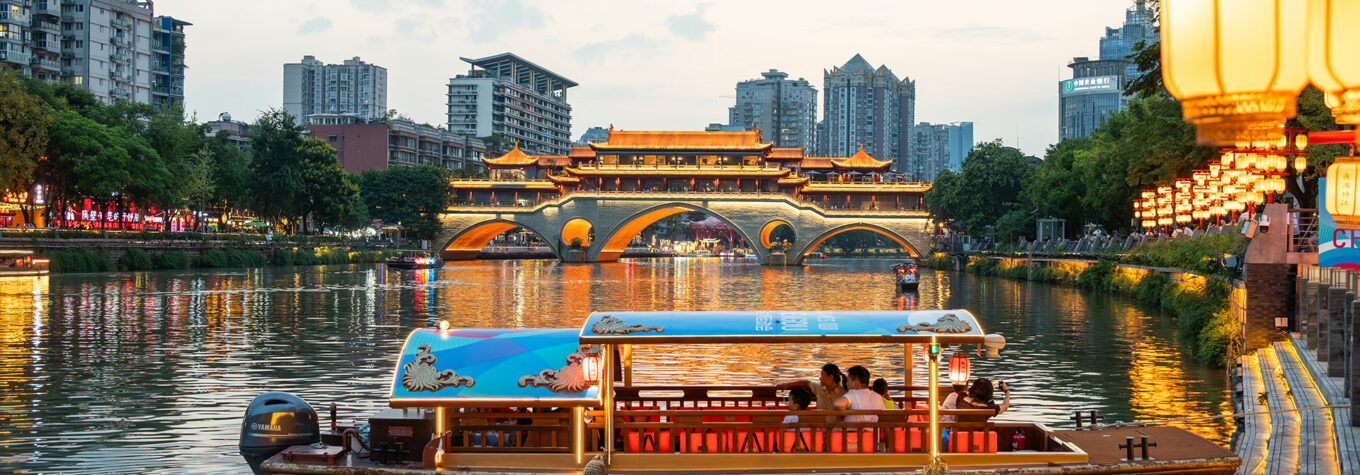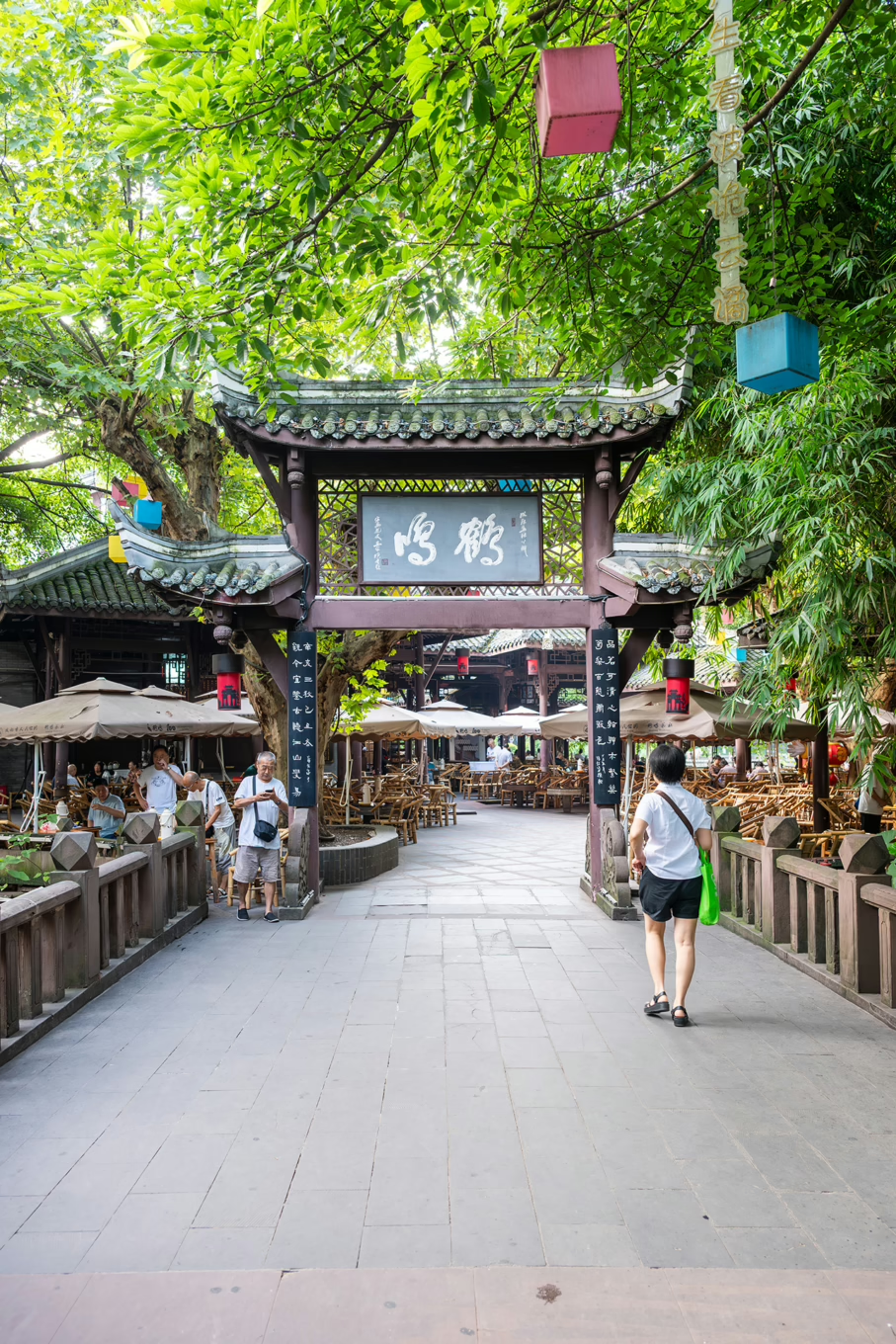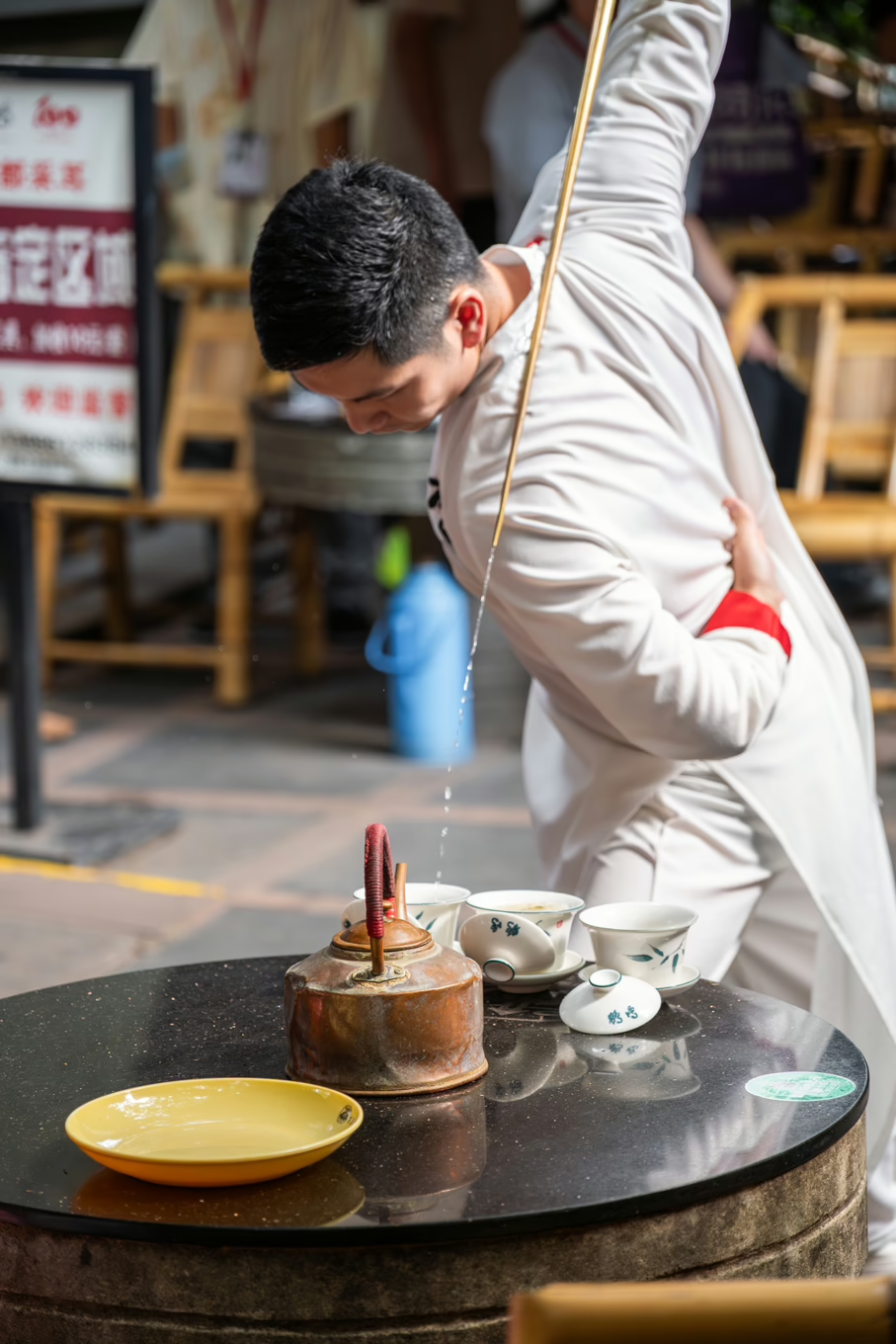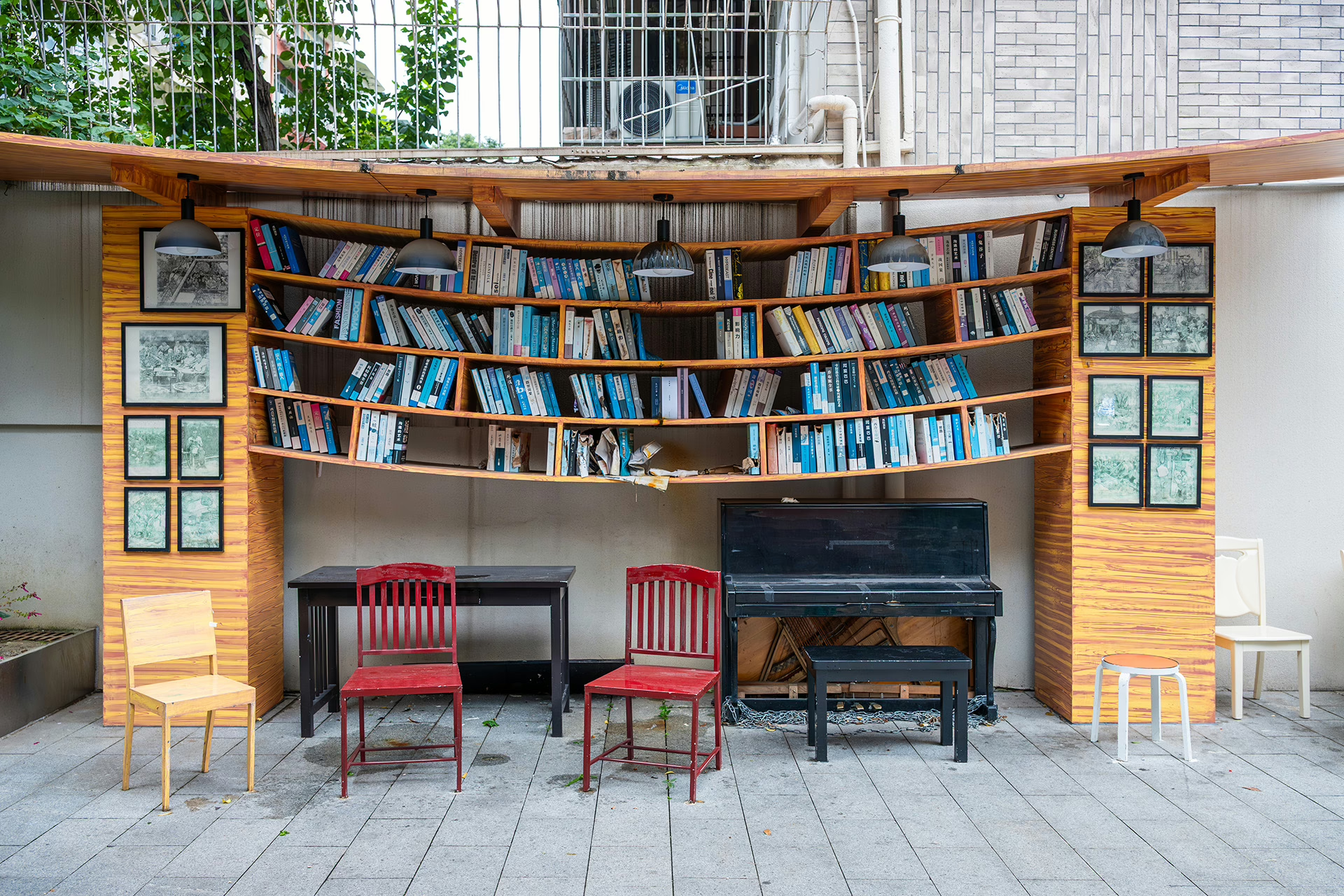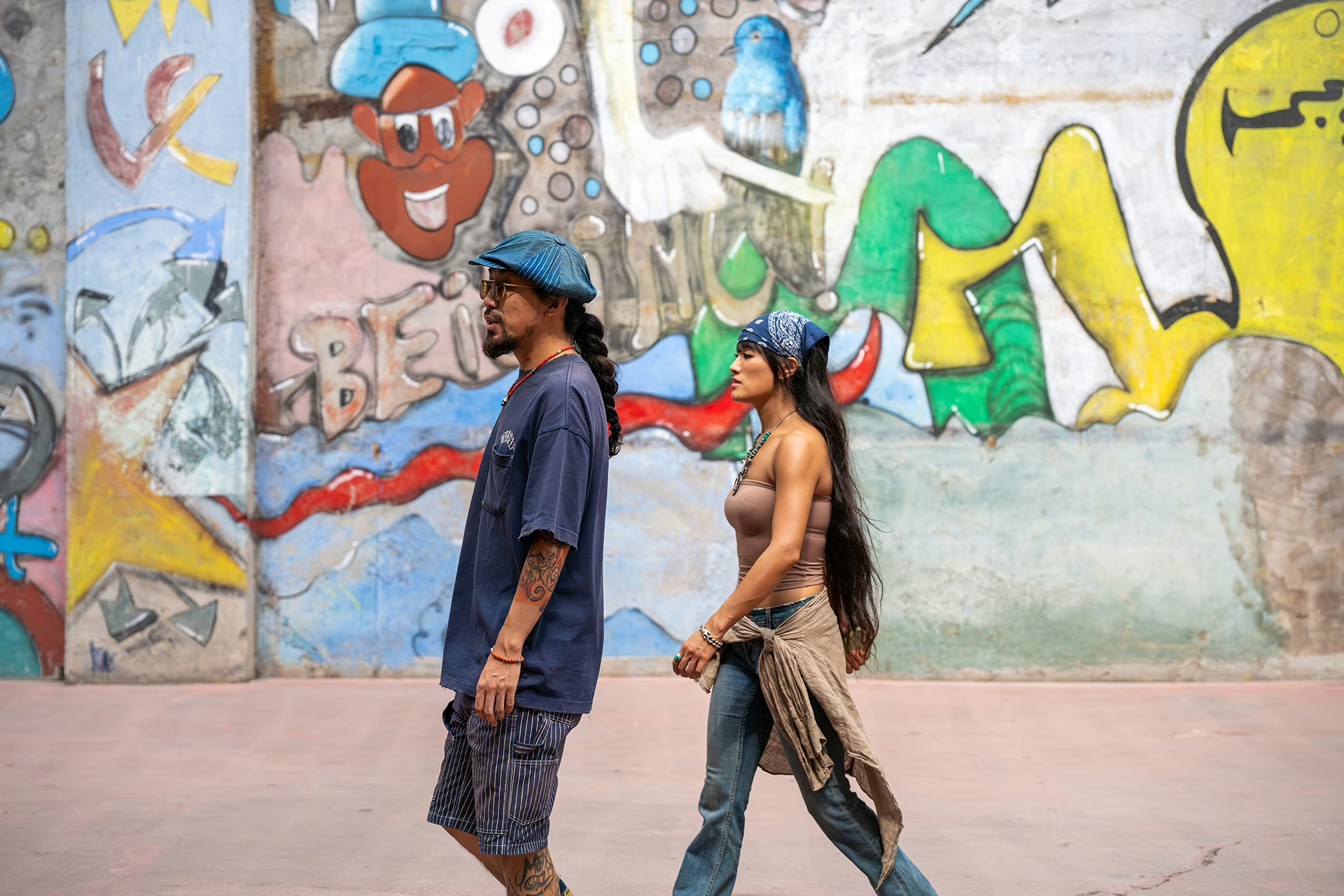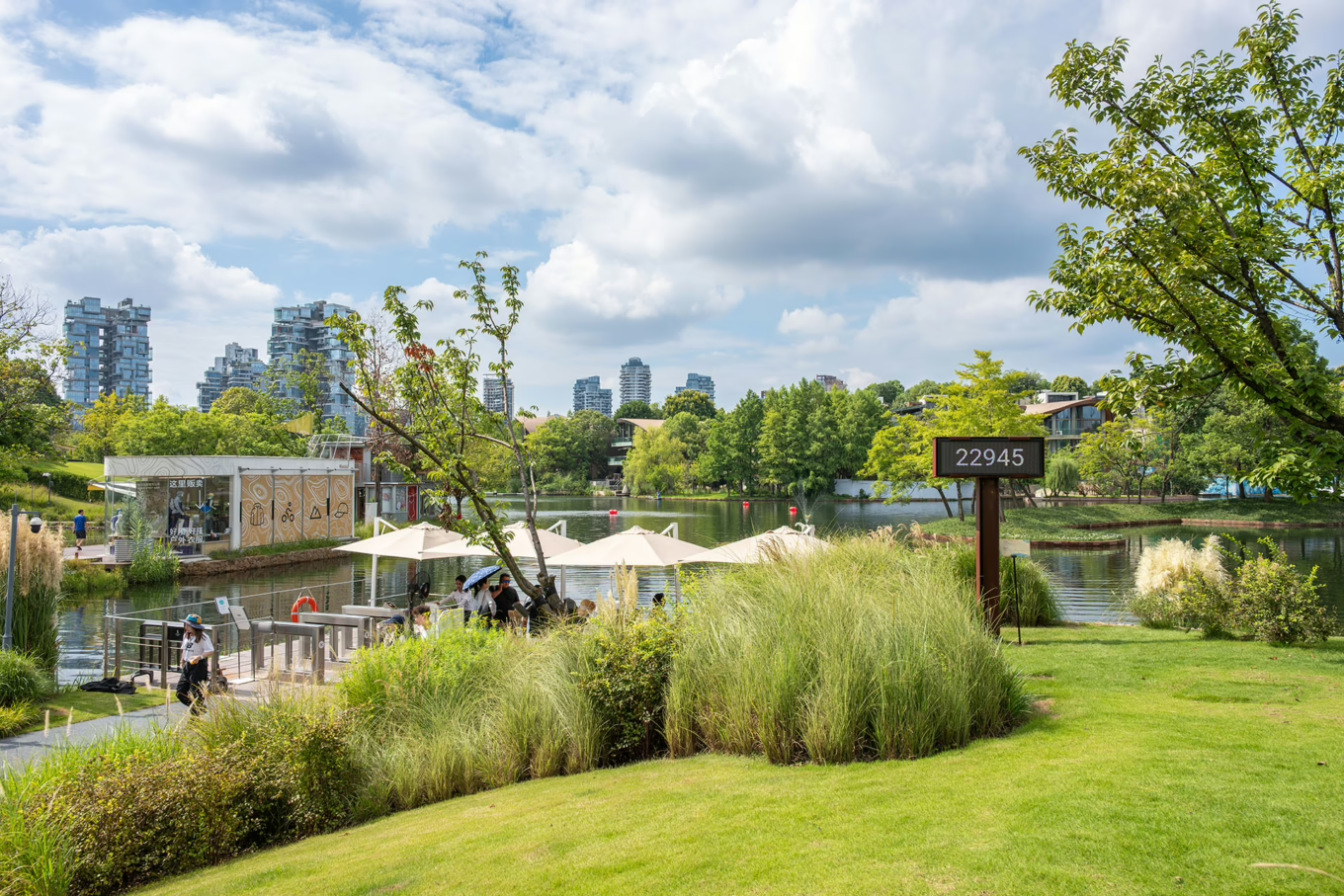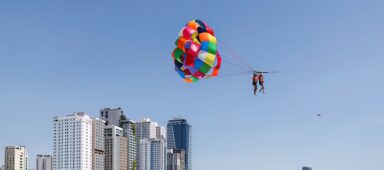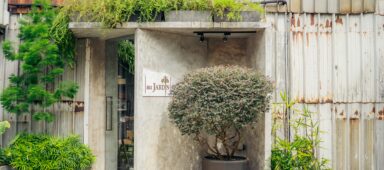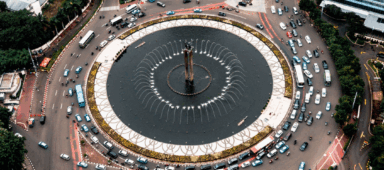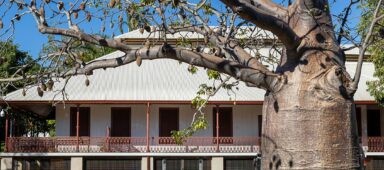In a country often defined by speed, the capital of Sichuan province takes life at its own pace – where centuries-old temples, tea rituals and opera coexist with art parks, riverfront bridges and factory-turned-creative hubs, making it one of China’s most liveable cities
Photography Philippe Lejeanvre
The capital of Sichuan province in southwest China, Chengdu is a metropolis of more than 20 million people. That number alone might suggest a city as relentless as Beijing or Shanghai. But Chengdu moves differently. Where Beijing projects political weight and Shanghai hums with financial speed, Chengdu takes its time. Its defining reputation is for its liveability – a city that protects leisure as carefully as it builds infrastructure.
That priority comes into focus at Heming Teahouse, a century-old institution within the 11ha People’s Park downtown. Beneath pagodas and towering trees, tables stretch endlessly, packed with families, retirees and mahjong players whose tiles clack in a steady rhythm.
“Here, quality of life is valued more. People prefer to prioritise rest over stressful long hours at work,” says my taxi driver, a stocky Tibetan man in his mid-40s, before dropping me off. A lake glimmers, koi fish surfacing occasionally as if on cue. I order yellow bud tea on the recommendation of a waitress who has worked here for decades. It is indeed delicious.
Later, I come across a classic Chinese opera in another courtyard nearby, where masked figures perform on stage in a burst of colours. A young waitress, dressed in turquoise traditional attire, seats me outside and recommends the flower tea. The natural beauty and relaxed tea culture create a genuinely peaceful environment.
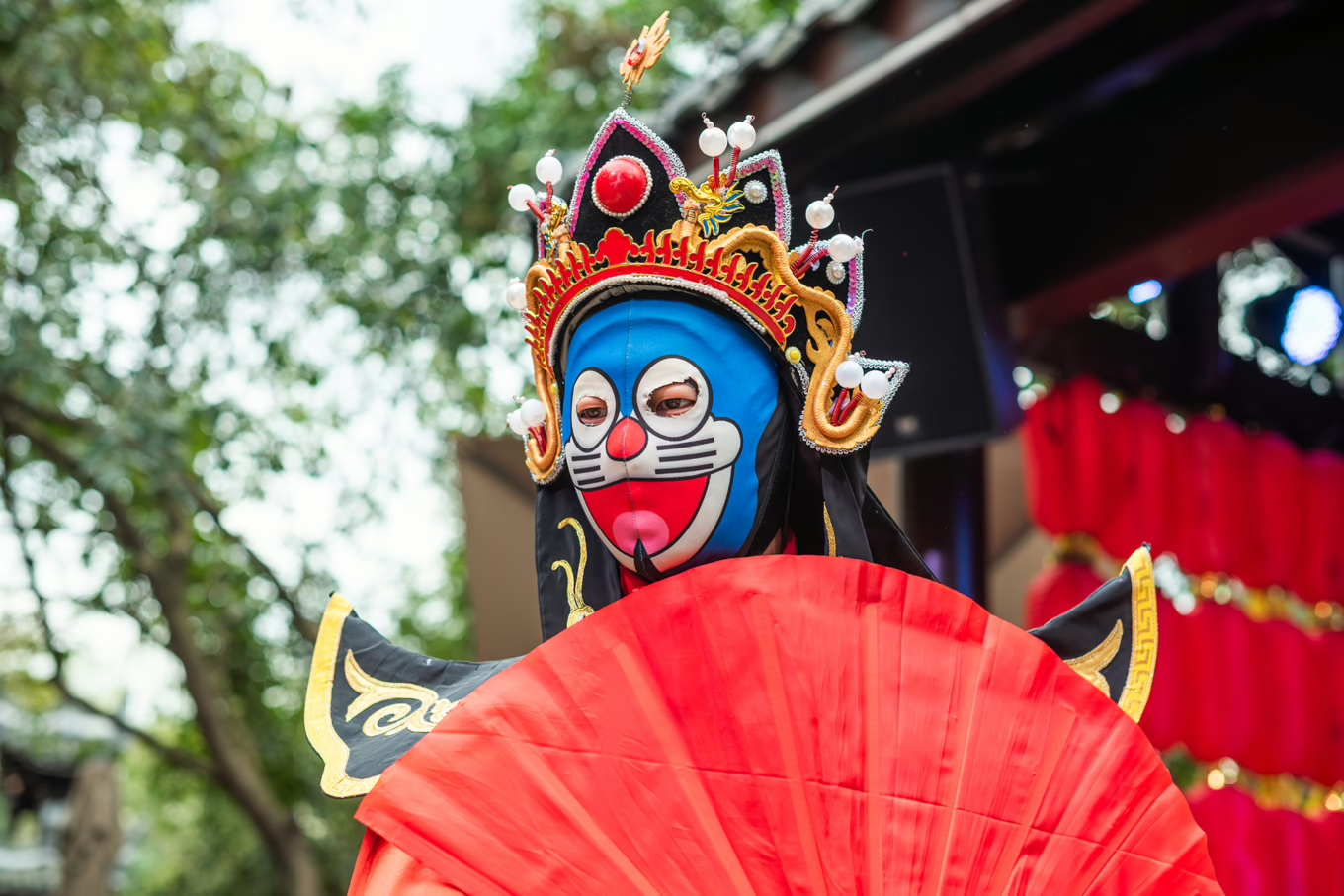
Leaving the park behind, I head to Taikoo Li, an open-air shopping complex lined with outposts of European luxury brands. The polished glass façades and immaculate walkways could belong to any global city, but at its centre stands Daci Temple, more than 1,600 years old. Here, incense curls through the air, its presence threading an ancient rhythm into the sleek commercial heart of modern Chengdu.
Inside the grounds, sunlight falls through the trees, catching the smooth stone of a floral courtyard worn down by centuries of footsteps. Within the temple’s walls, a small Sichuan restaurant operates almost unnoticed, its wooden beams weathered and its tables simple yet inviting. At the counter, a smiling elderly woman serves me a basket of baozi – steamed buns filled with fragrant vegetables. I sit beneath an umbrella while locals gather at nearby tables, sipping tea and laughing softly. The scene feels timeless, like stepping into a painting.
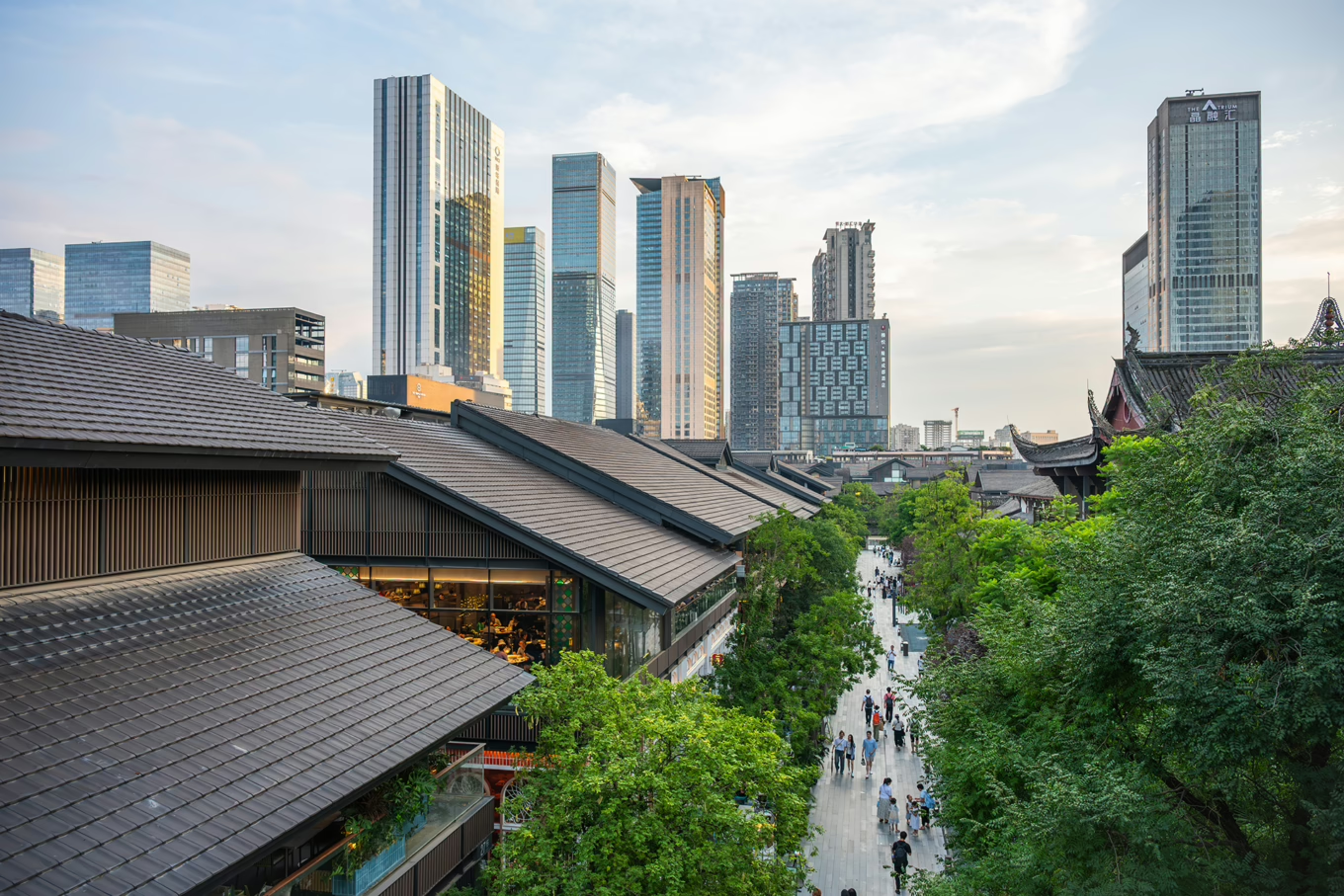
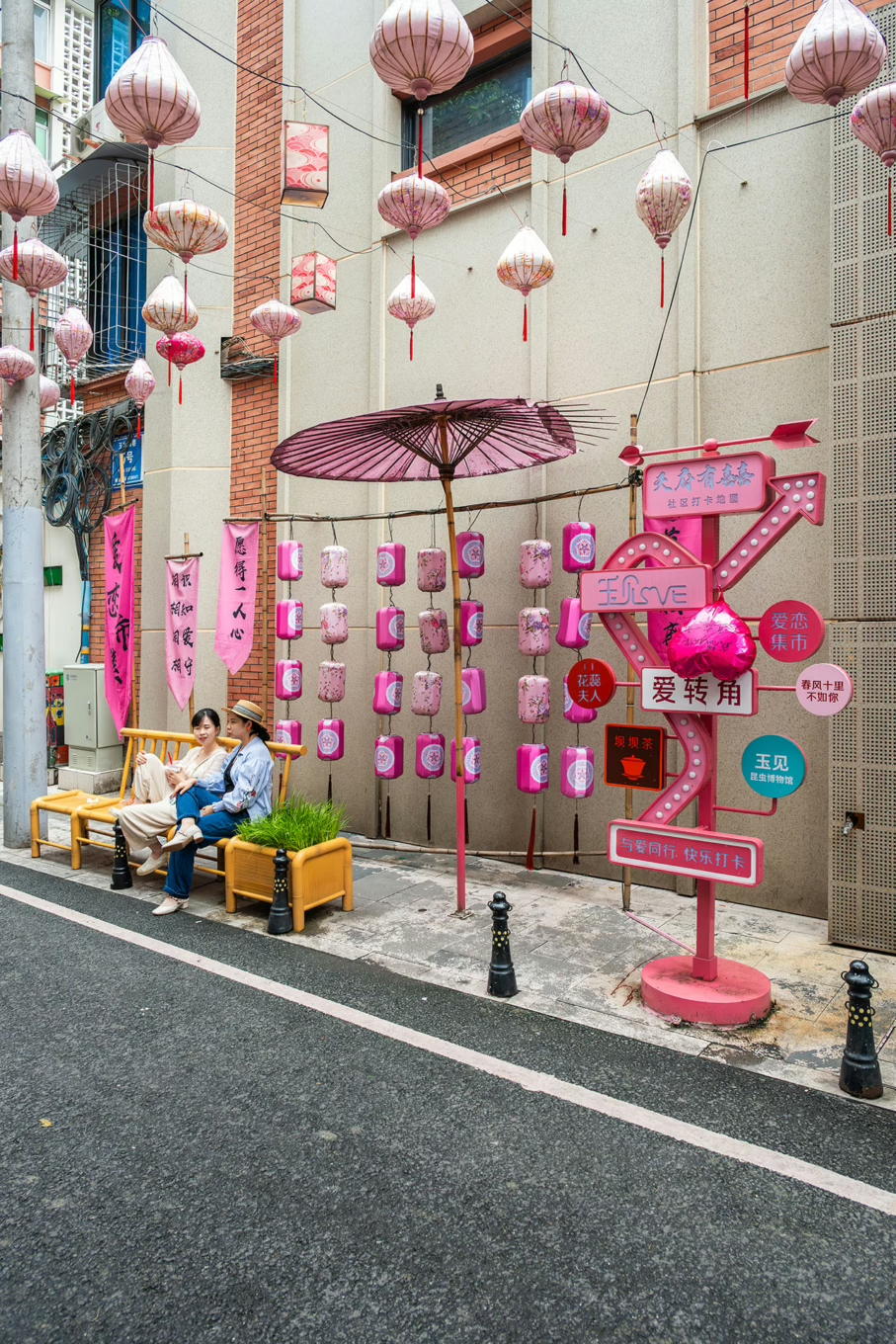
This habit of lingering extends to Chengdu’s younger quarters as well. On Yulin Road, immortalised in Zhao Lei’s 2016 song “Chengdu”, taverns spill out onto the streets, murals brighten the walls and shops brim with curiosities.
At Oasis, a gallery-like boutique, the owner, Blue, shrugs when I ask about prices. “Nothing has a tag,” she explains. “Customers decide what to pay. Everyone is relaxed here.” Her philosophy is echoed in the items on display – a Native American doll beside a Catholic icon, artefacts pulled from different worlds but set down easily side by side.
If the first impression of Chengdu is leisure, the second is reinvention – the city has a talent for reshaping what it inherits. The clearest example is Eastern Suburb Memory, a former industrial site that has become one of Chengdu’s most dynamic cultural hubs.
Warehouses once filled with heavy machinery now host live music venues, design studios and cafés. Murals creep across brick walls, while young artists unpack canvases under converted skylights. The atmosphere is laid-back by day, electric by night – proof of Chengdu’s ability to turn industry into art.
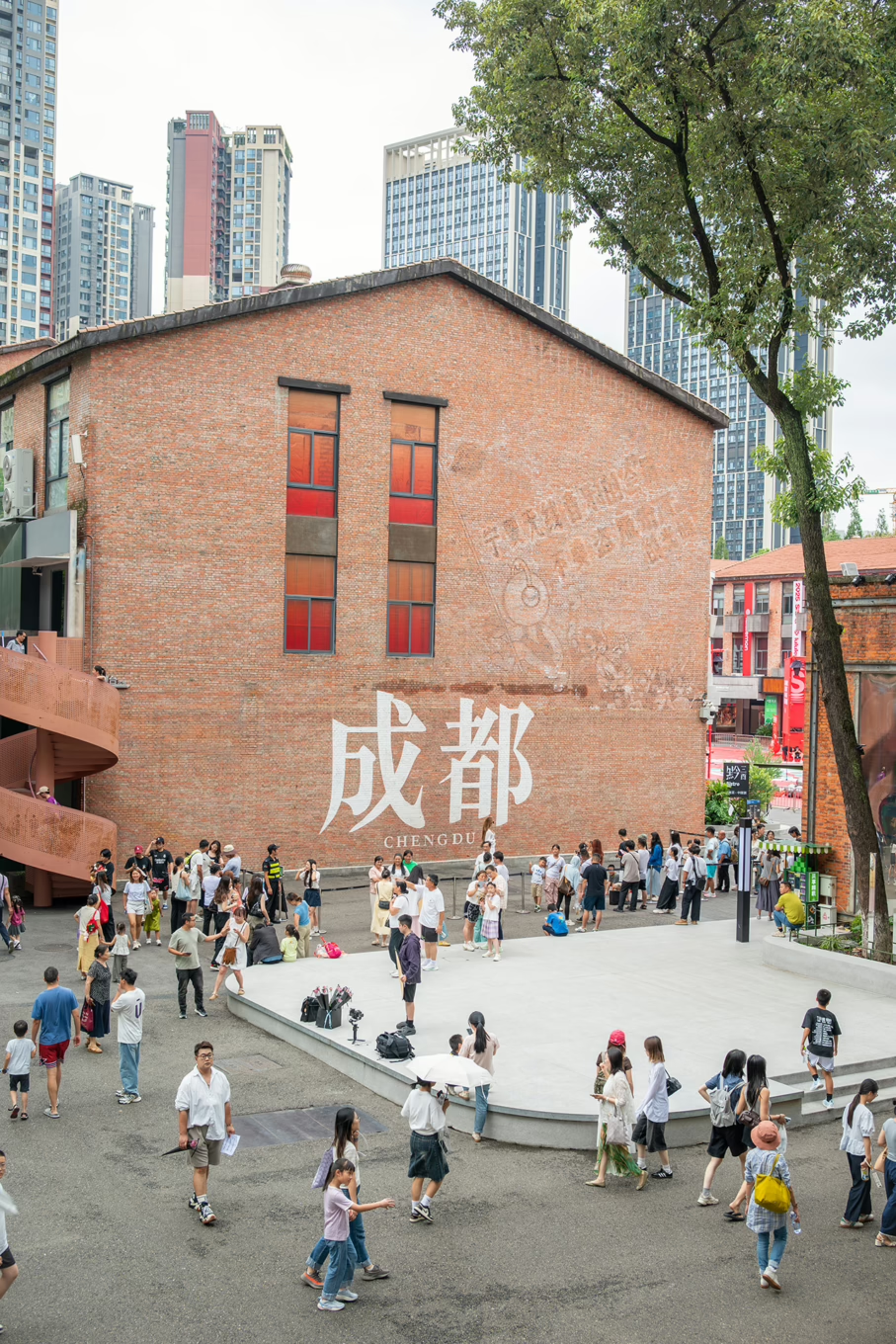
By midday, I arrive at Tianfu Art Park, an immense new cultural complex with three museums, including the hibiscus-shaped Chengdu Art Museum, which recently hosted an exhibition of works by the artist Su Xinping – including his iconic Walking Man sculptures which still stand outside the building.
Within Tianfu Art Park are two more museums, and exhibitions range from cutting-edge installations to works celebrating Sichuan’s artistic lineage. Families wander across broad lawns, students sketch by the water, elderly couples stroll quietly. It is ambitious yet intimate – a park that makes culture part of daily life rather than a distant pursuit.
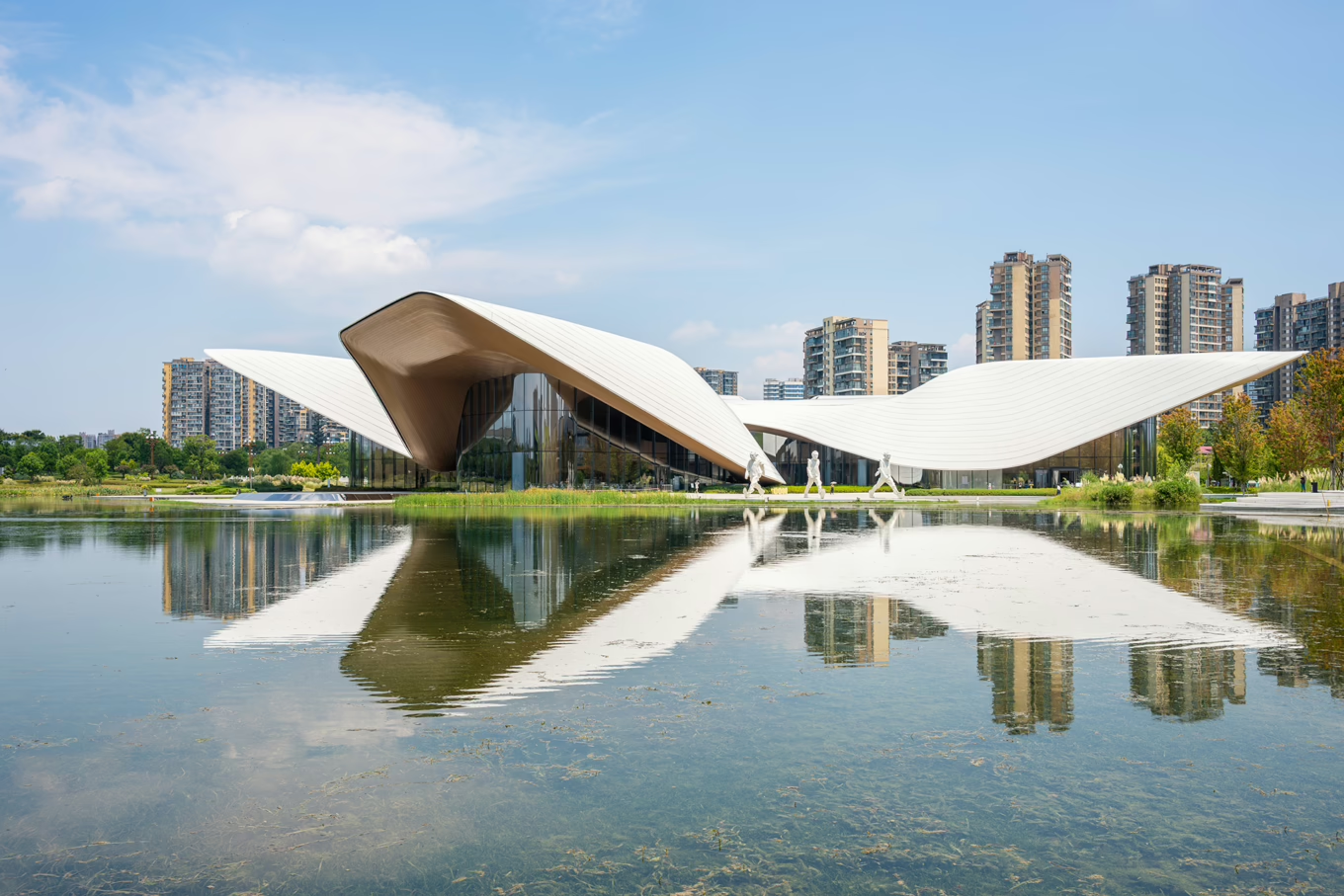
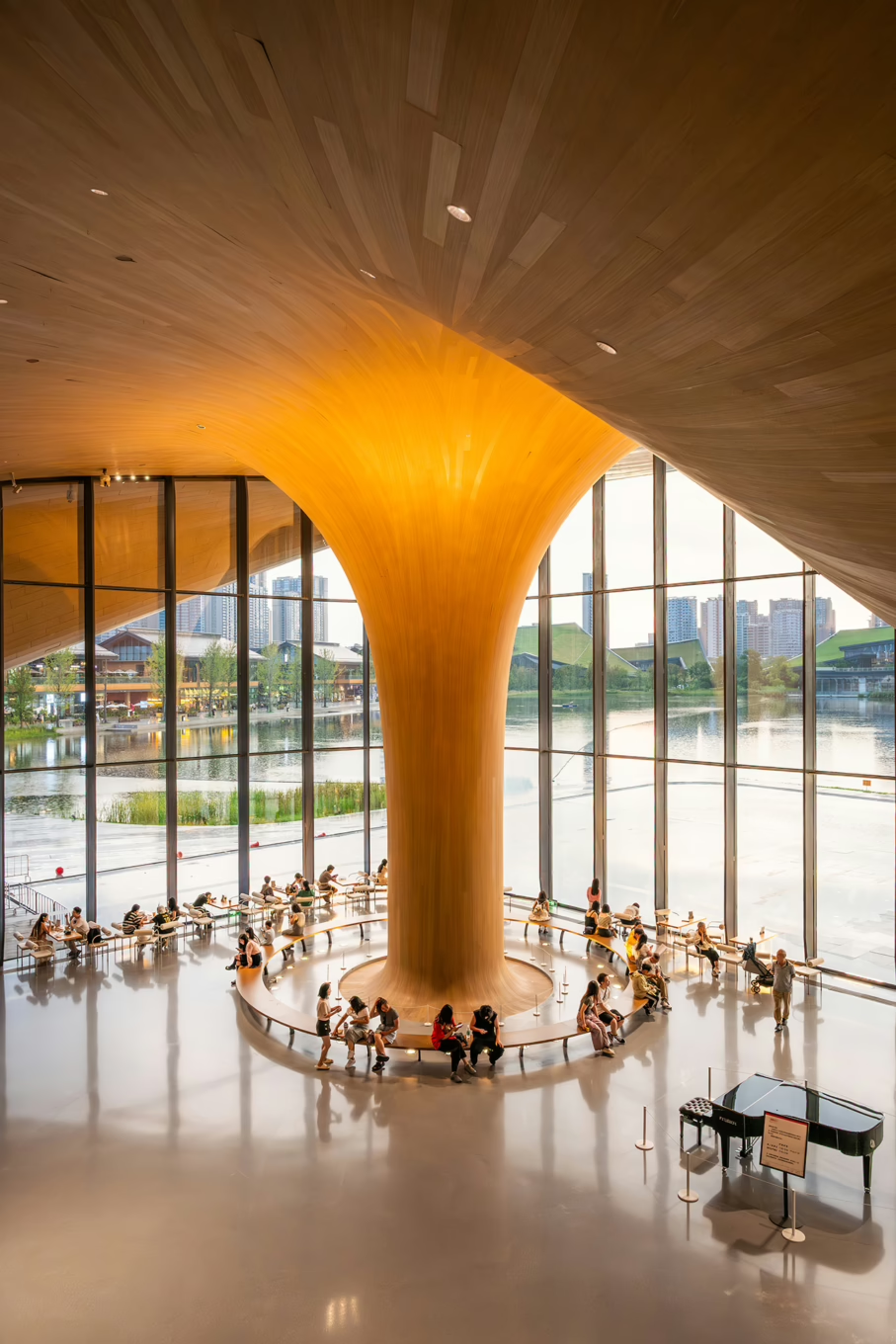
By evening, I find myself by the Jin River at Anshun Bridge. Marco Polo once stated that it was “one of the most impressive bridges in China.” As I stand before it now, I can understand the explorer’s heavy praise.
Anshun Bridge is hardly colossal, yet its grandeur is revealed through the richness of its details. Intricate carvings of plum, orchid and bamboo adorn the railings, while emerald-green tiles and vermilion-red walls combine to create a scene that radiates the spirit of China.
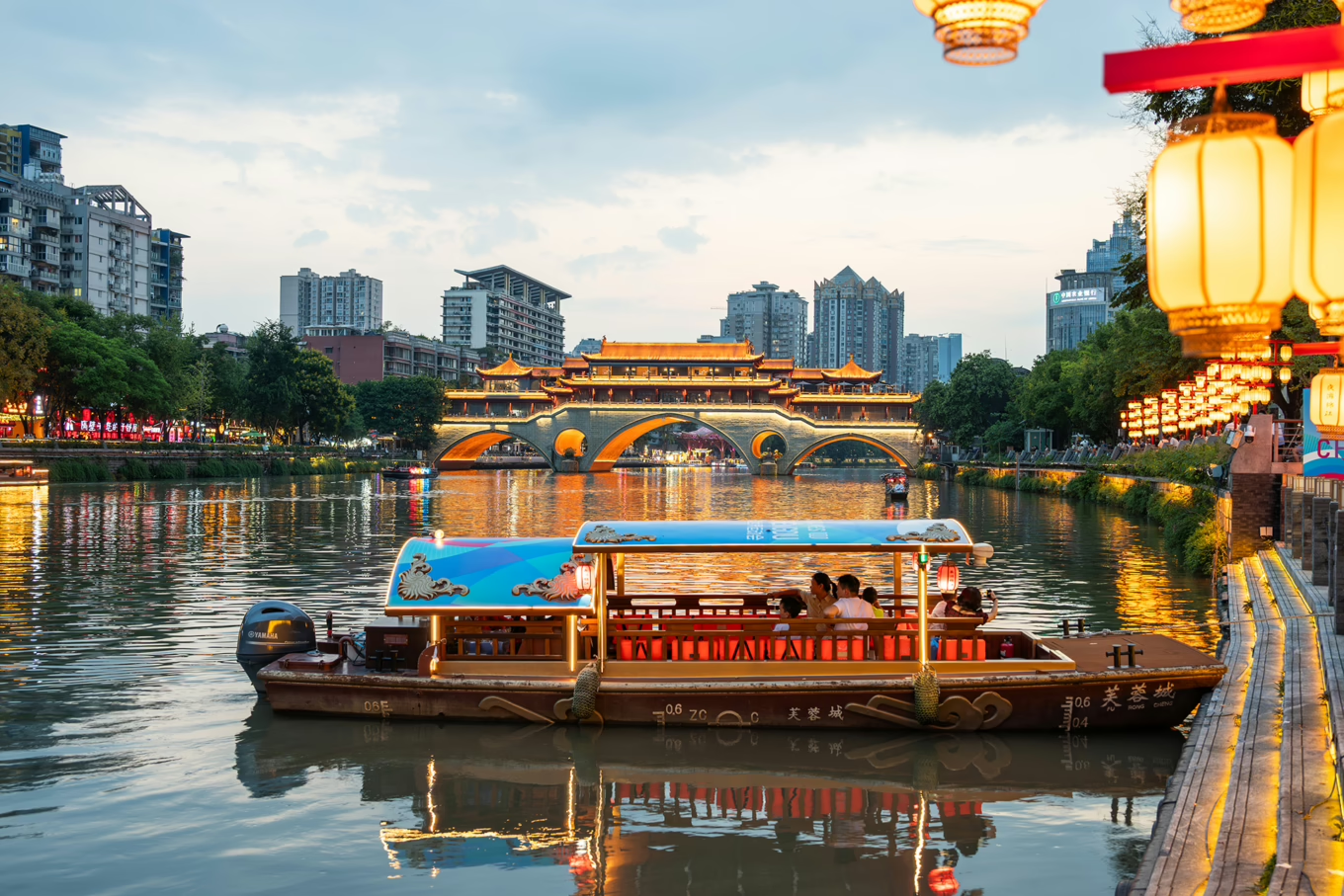
As darkness falls, the bridge glows with warm amber lights – yet another example of Chengdu’s unique ability to turn historic sites into modern spectacles.
Anshun literally translates to “peace and smoothness”, a feeling that is unmistakable as I watch the now-lit-up river boats sail underneath. Along the picturesque riverbank, bars and restaurants line the water. I take a stroll in search of the ideal spot to relax and observe Anshun in all its glory.
There is a slightly livelier vibe around the bridge, though not to the point of being overwhelming. A gentle hum of chatter drifts from nearby groups, accompanied by the occasional clinking of glasses. I spot various couples and families relaxing by the river – some enjoying a drink, others lining up to take one of the frequent boat tours.
Eventually, I find the perfect seat. Situated right next to the river, I have a stunning view of Anshun Bridge in all its splendour. Taking a sip of a smooth whisky sour, I can’t help but appreciate how Chengdu manages to maintain such a rich history with modern flavour.
The following morning, in the CPI district, minimalist lakeside cafés offer one last perspective. When a light rain begins to patter against a glass roof, the entire district feels suspended in time. Leisure here is not an indulgence but the very rhythm of Chengdu’s daily life.
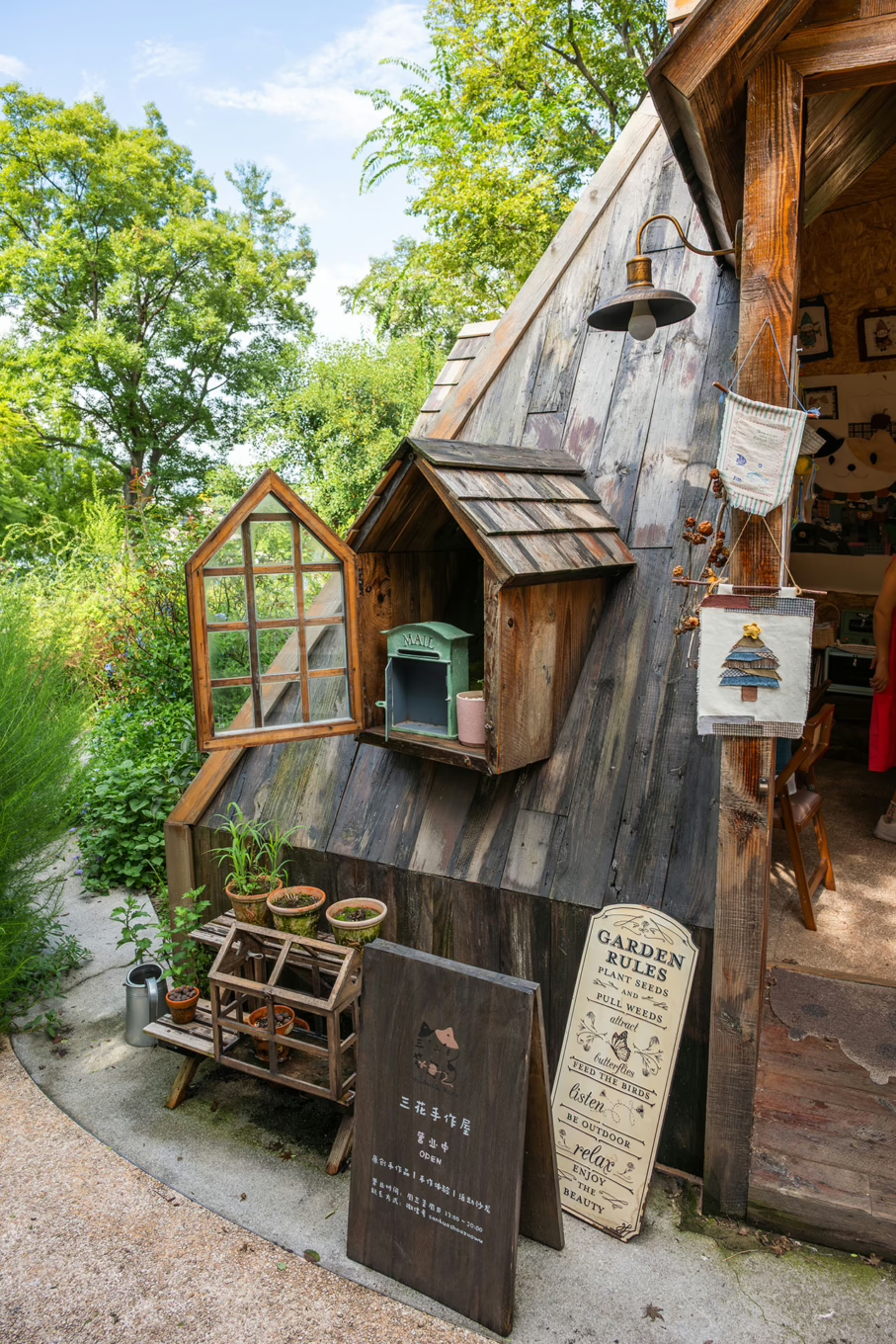
Where to stay in Chengdu
Three top hotels in the capital city of Sichuan province
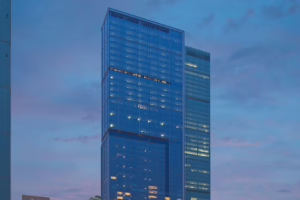
Niccolo Chengdu
Chic, fashion-inspired rooms and suites with skyline or temple views, an indoor pool and fitness centre. They also offer a personalised shopper experience with access to high-end luxury products. niccolohotels.com
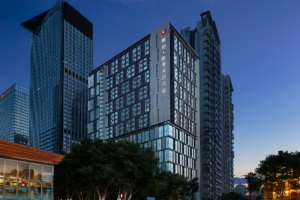
Rhombus Park Aura Chengdu
Overlooking the Daci Temple, the stylish all-suite hotel oozes lowkey luxury with spacious suites, a separate living area and cloakroom as well as personalised amenities tailored for both him and her. en.rhombuschengduhotel.com
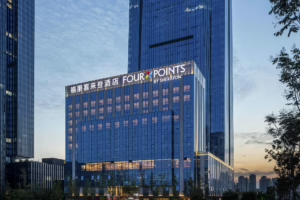
Four Points by Sheraton
Modern, cosy rooms boasting industrial chic design, complimentary breakfast and craft beers in the lobby lounge. In an unbeatable location right in the heart of the city. marriott.com
